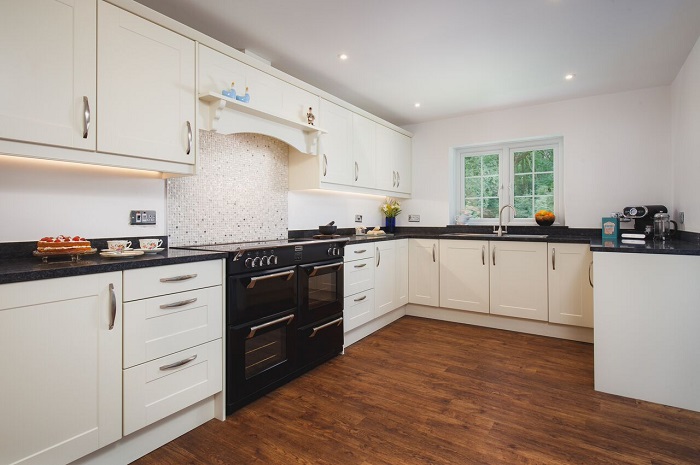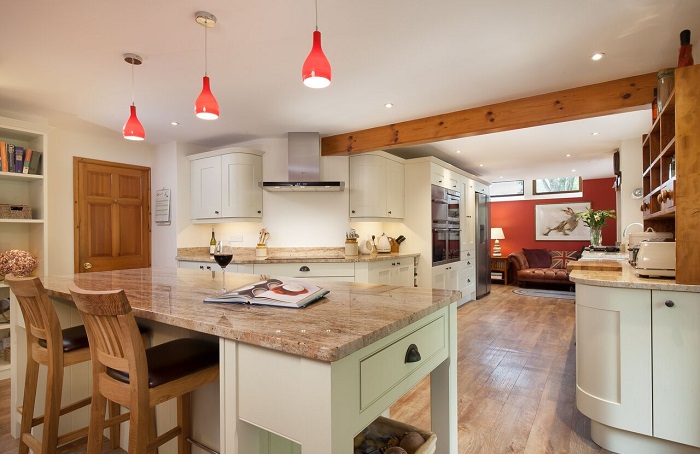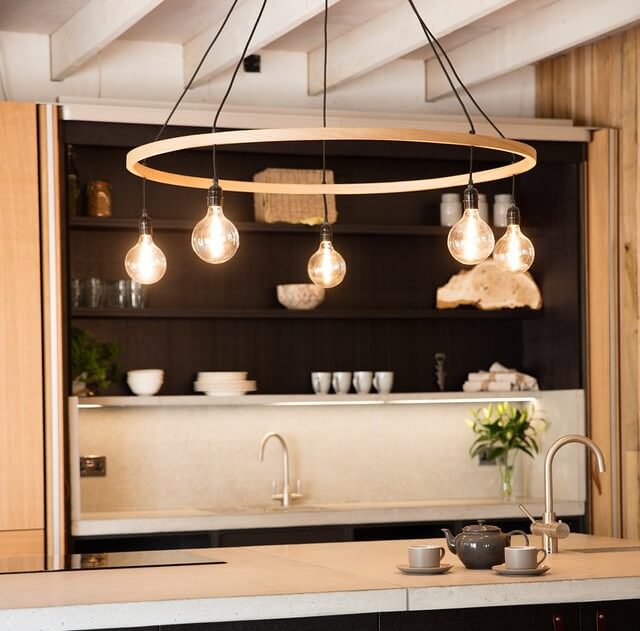As one of the most frequently used and functional rooms in the home, our kitchens are important to us. Over the years, kitchens have become a living space, rather than just a food preparation area. Every part needs to be working towards creating the perfect environment.
If you’re looking at our website, you no doubt have an interest in choosing the best kitchen cabinets and worktop for your home, but it is also important to choose the right lighting for your kitchen.

There are plenty of options when it comes to kitchen lighting with variations in colour temperature, shape and style. Before choosing your perfect bulbs though, don’t make one of these common mistakes.
Many people try to light the room using a single fixture of a fixed grid of lamps. This can create uneven light distribution and cast shadows on the work surface. By having multiple lights across the room you can bring brightness to every part of the worktop space.

Consider having task lighting, which would include under-cupboard lighting above work surfaces. This can helps reduce the amount of shadows in important places and enables clear vision of what you are doing.
A great way of lighting the work surface below cabinets is to use a linear light source such as the LED Contour strip. This provides a continuous lighting effect which is ideal for today’s contemporary kitchens.
Unusual solutions can involve back-lighting a glass splash back which could change colour.
Kitchen lighting needs to have the most flexible lighting scheme in the home to reflect the wide range of functions which kitchens are now used for.
Your kitchen lighting will need to adapt from a bright, general light for the day, especially in dark kitchens as a supplement to daylight, to children’s tea and home work at dusk, to an intimate light for dining in the evening. Dimmer switches add much needed flexibility, with the ability to use brighter lighting at night and moodier, more intimate lighting for your evening meal.
In a kitchen with high ceilings, look at visually lowering the sense of scale by adding low hanging pendants over the island. Kitchen cabinets can also be used for uplighters for general light and this will also reduce the number of downlights required.
As kitchen lights tend to be on for much longer than other lights in the house, you should seriously consider upgrading to LED as they are more energy-efficient than traditional incandescent bulbs.
When choosing the colour temperature of your bulbs, think about the uses of that area. For a communal seating area, a warmer, golden light can help create a welcoming atmosphere, but for increased visibility of your food, consider a horizon daylight bulb.

Think about using daylight bulbs around the areas where you will be working- specifically the worktops. Here you will want to clearly see what you are doing, and you will want to see the true colour of the food you are preparing.
For the communal areas, like dining tables, you may prefer a softer, more orangey light. This could be a 3000k horizon daylight bulb or even a 1800K sunset white. For a full guide, read this article on colour temperature and light bulbs by Elesi.
If you choose a light fitting or a floor lamp on which the bulb is the central feature, you may prefer an Edison style LED bulb. Vintage Edison style bulbs provide ambience and a more orangey glow, but are unsuitable for task areas such as worktops and sinks.